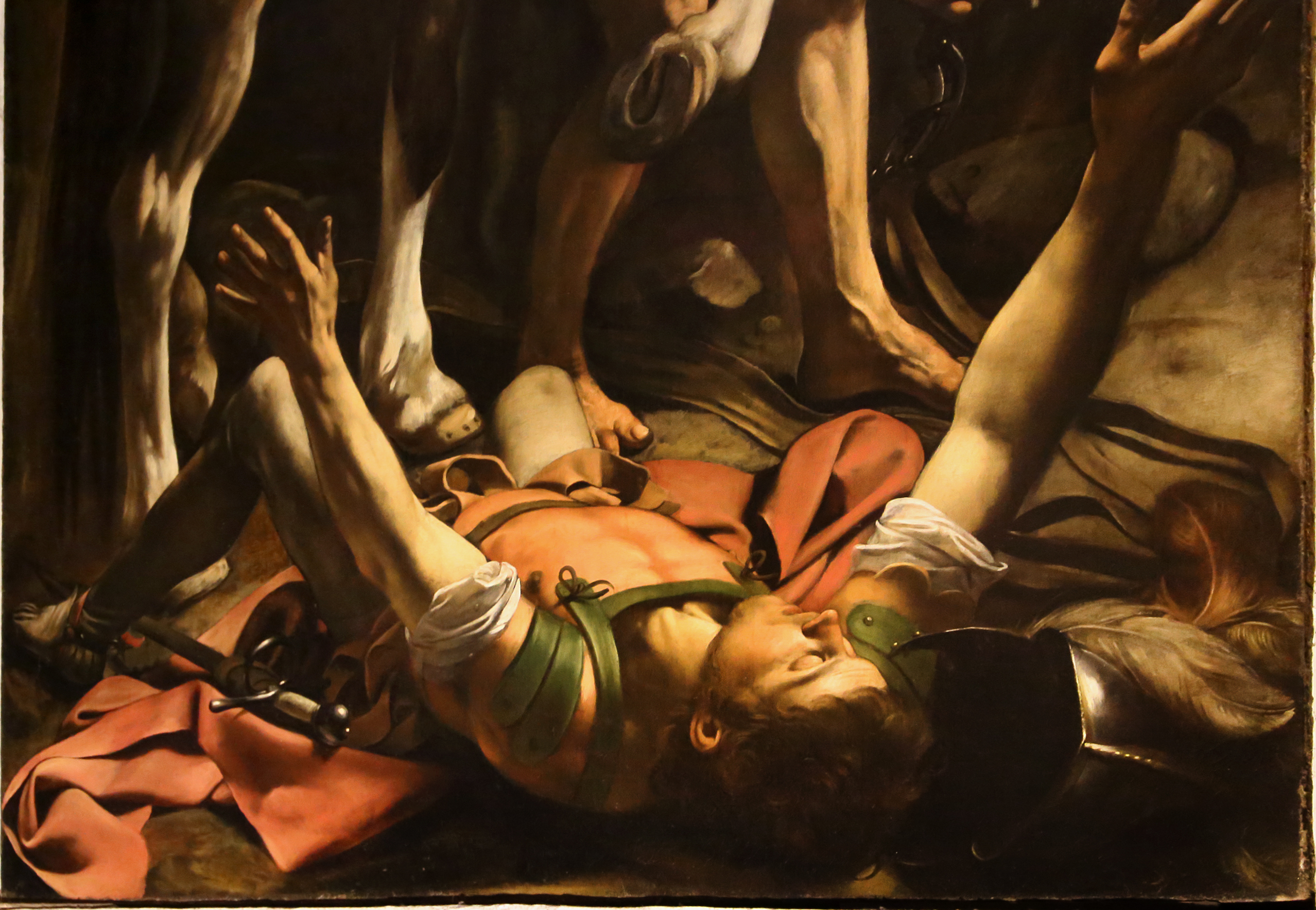Caravaggio’s Paul
January 25, 2020

“THE CONVERSION of Saul” by Caravaggio is one of the world’s great dramatic paintings. It depicts St. Paul (Saul) on the road to Damascus, when he is struck blind and thrown off his horse, forever changed. Caravaggio completed the painting in 1601 for the Cerasi Chapel of the church of Santa Maria del Popolo, in Rome.You may never make it to Rome to see this incredible painting but you can experience it online.
Here is a basic introduction in a video lecture.
One of the interesting characters in the painting is the horse. He overwhelms Paul. What is Caravaggio suggesting?
Nigel Halliday writes:
Why is the horse so important? He is huge, filling two thirds of the canvas. He is clearly not there just as a prop to emphasize Saul’s fall from human pride. The light catches his flank and he is beautifully painted – Caravaggio’s realism at its best. Writers often comment that the horse is oblivious to what is happening, just a dumb animal. But that would mean that Caravaggio has devoted a huge amount of brilliant painting to a subject that is peripheral to the action.
To me what is most striking about the horse is how careful it is not to harm Saul. The horse’s eye is clearly on the prostrate figure. The horse is posed with its front right hoof raised and twisted out towards the viewer as if it is being specially careful about where it is going to put it. Indeed, if you draw in the diagonals of the painting, it is the hoof that is the centre of the painting.
The horse seems to stand there as a metaphor for the power of God. This animal with a strong will and immense power has the potential to inflict serious injury on the fallen figure. But in fact it is behaving with great gentleness, care and indeed compassion.
There is implied violence in this scene and yet, we are being told, no one will be hurt. Saul will regain his sight in a few days’ time and he will be set on a new and wonderful road, preaching peace instead of violence, love instead of religious hatred, reconciliation for the whole world.
God deals with us sometimes in shocking, sudden, even brutal ways. But always his purposes are to do us good and to do good through us. Like the horse here God is mighty and scary, but very careful where he treads. He never crushes us. On the contrary, he raises us up to new beginnings.
Today is the Feast of the Conversion of St. Paul, a singular event in world history.
Saul of Tarsus was a well-educated and fiercely dedicated Jew, a Pharisee and member of the tribe of Benjamin. He was named after Saul, the first king of Israel, who was also a Benjamite, and became known as Paul after his conversion to Christianity.
Although he had been educated “at the feet of Gamaliel,” who was greatly respected for his learning and who himself was a tolerant person (Acts 5:34-40), Saul of Tarsus had a fiery nature and became an anti-Christian extremist. He thought that Christianity blasphemed and felt that Christianity was a threat to his religion. Saul scoured Jerusalem for Christians, and when he found them he had them bound and delivered to prison or to death. He was a witness to the stoning of St. Stephen, the first Christian martyr, as the New Testament notes in Acts 8:1: “and Saul was consenting to his death.”
After considerable success in rooting out Christianity in Jerusalem, Saul, “breathing threats and murder against the disciples of the Lord,” decided to journey to Damascus and continue what he felt was his holy work in that city. It was then on the road there that his dramatic conversion took place, perhaps a few years after Jesus’ death.
(The American Book of Days, Stephen G. Christiansen; H.W. Wilson Company, 200; p. 87.)

